Feeding Of Dairy Animals
Back
Fodder Production
Legume Fodder
1. Cowpea / Lobia -
It is an annual crop.
This crop is grown in tropics, sub-tropics and warm temperature regions.
It is grown for feeding in green form, for hay making or for ensiling in mixtures with sorghum or maize.
It can be grown during kharif, Rabi and summer seasons.
It is suitable for year round cultivation.
Varieties include Co 5, Russian giant, EC 4216, UPC - 287 and local varieties.
Recommended seed rate - 40 kg/ha.
Harvest 50-55 days after sowing (50% flowering stage).
Variety Co 5 is suitable for growing under irrigated conditions (June - July).


2. Lucerne
Lucerne is also termed `Queen of forages'
.
It is a deep rooted perennial forage legume adapted to a wide range of conditions ranging from tropical to alpine.
It is very palatable and nutritious forage legume containing 15 - 20% crude protein on dry matter basis.
Lucerne adds nitrogen to soil and improves soil fertility.
It is grown for green fodder, hay, silage but does not tolerate close grazing.
Varieties include Anand 2, Sirsa - 9, IGFRI S - 244, and Co 1.
Variety Co1 is suitable for growing during July - December.
Not suitable for very hot and very cold climates.
Recommended seed rate --20 kg/ha.
First harvest 75 - 80 days after sowing. Subsequent harvests are made at intervals of 25 - 30 days.


3. Stylo
Stylo is an erect growing perennial forage legume native of Brazil.
It grows 0.6 to 1.8 m tall.
Stylo is adapted to tropical climate and tolerant to low fertility soils acidic soils and soils with poor drainage.
Stylos are drought resistant legumes coming up well in areas receiving a minimum rainfall of 450 - 840 mm annually.
The crude protein content of stylos ranges from 15 to 18%.
Season is June - July to September - October.
For line sowing (30 x 15 cm), the seed rate is 6 kg/ha and for broadcasting 10 kg/ha.
First harvest can be taken 75 days after sowing at flowering stage and subsequent harvests depending upon the growth.
It is to be noted that during the first year, the establishment after sowing is very slow and the yield is low.
Later on when the crop establishes well due to self seeding it yields 30 to 35 t/ha/year from the third year onwards.
Stylo is a good pasture legume.
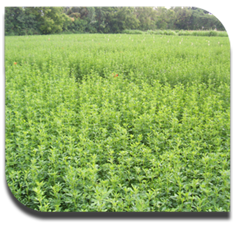
Cereal Fodder
1. Fodder maize –
Maize is an annual crop.
It is grown on a variety of soils, but well drained fertile soils are best suited.
Maize is mostly grown as KHARIF crop i.e. sowing in June - July. In south India it makes best growth in RABI and also in SUMMER.
It can be grown throughout the year with irrigation facility.
African tall, Vijay composite, Moti composite, Ganga - 5 and Jawahar are some important fodder varieties.
Maintain a seed rate of 40 kg/ha and dibble one seed to a spacing of 15cm between the seeds in the row which are 30 cm apart.
The average green fodder yield is 40-50 t/ha and the dry matter yield is 10-15 t/ha.
Staggered sowing is recommended for supply of green fodder for a long period.
Harvest the crop when the cob is in the milky stage.
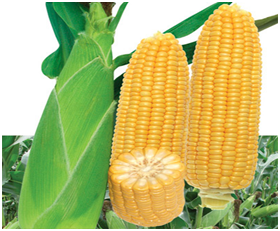
2. Fodder sorghum - / Jowar
It is cultivated mainly for grain and also for fodder.
Sorghum is a drought resistant annual crop.
It thrives in tropical climate with a temperature range of 25-35oC.
It is not suited to higher elevations (more than 1200 m).
It can be grown under an annual rainfall of 300-350 mm.
It can be grown on any soil except on very sandy soils.
Suitable varieties for Irrigated (Jan - Feb and Apr - May) are Co.11, Co. 27, Co.F.S. 29
Suitable varieties for Rainfed conditions (Jun - Jul) are Co.11, Co27, Co.F.S.29
Suitable varieties for Rainfed (Sep - Oct) are K7, Co.27, Co.F.S. 29,K 10
Co.F.S. 29 is a multicut variety and released by Tamil Nadu Agricultural University during 2001. It is cross between TNFS 9602 and Sudan grass.
Seed rate is 40 kg/ha (only 12.5 kg/ha for Co.F.S. 29).
Sorghum can be harvested after flowering stage for green fodder.
If it is a single cut, it should be harvested at 60-65 days (50% flowering) after sowing and if it is a multicut, the first cut is 60 days after sowing and subsequently once in 40 days.
For Co. F.S. 29, each harvest has to be done at 65 days interval (5 harvests in a year).
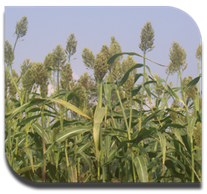
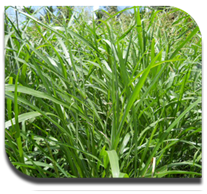
Grass Fodder
1. Hybrid Napier - Bajra Napier Hybrid
This is a perennial grass fodder.
It possesses more tillers and leaves than Napier grass and is more vigorous and higher in fodder yield and quality.
Crude protein ranges from 8 to 11%.
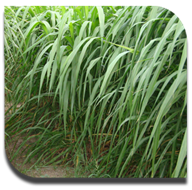
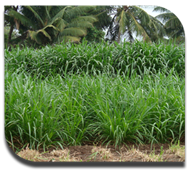
Tree Fodder
1. Subabul - Soundal (Koobabul)
This is fast spreading fodder tree which produces enormous seeds.
Suitable season for sowing is June-July.
Varieties- Hawaiian giant (lvory coast) and Co1.
Rainfed: (Sep - Oct) K 8, Giant lpil – lpil and Co 1.
Plants can be harvested in as early as 6 months after planting. However, the initial cutting should not be done until the trunk has attained at least 3 cm diameter or the plant has completed one seed production cycle.
Harvests can be repeated once in 40 - 80 days depending upon growth and season.
In drought prone areas, allow the trees to grow for two years to ensure deep root penetration before commencing harvest.
The trees can be cut at 90 to 100 cm height from ground level.
As green fodder under irrigated conditions, a pure crop yields about 80 to 100 t/ha of green fodder.
Under rainfed conditions 40 t/ha of green fodder is got after 2 years of initial growth and pruning to a height of 100 cm.


2. Sesbania - Agathi
The leaves of Sesbania trees are highly palatable and mostly liked by goats.
The protein content in this is about 25%.
Grown throughout the year under irrigation.
Comes up in soils with good drainage.
Seed rate is 7.5 kg /ha, sow the seeds at a spacing of 100 cm x 100 cm (100 cm between ridges and 100 cm between plants within the ridge).
First cut after 8 months and subsequent harvests at an interval of 60-80 days.
Green fodder yield of 100 tonnes per year is obtained from one hectare.
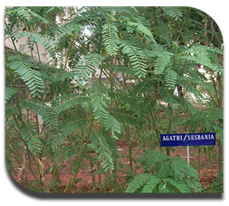
Feeding Management of Cattle and Buffalo
Feed ingredients
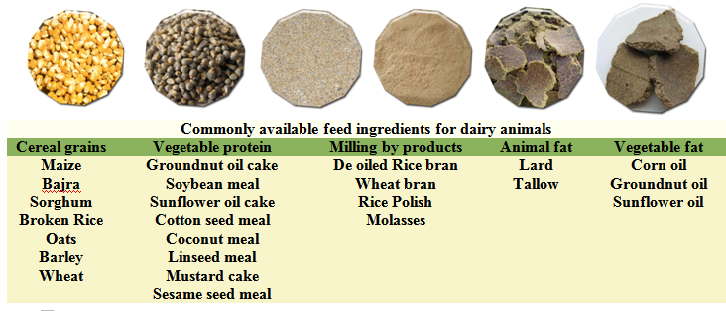
CEREAL GRAIN
Maize or corn (Zea mays)
Maize has high metabolisable energy value with low fibre content.
It has 8-13% of crude protein.
It has high TDN of 85%
Recently, new variety of maize (Floury 2) was produced with high methionine and lysine.
Farm animals are fed with crushed maize.
Flaked maize decreases the acetic acid to propionic acid proportion in rumen and hence depresses the butterfat content of milk.
Improperly stored maize having higher moisture content are prone to aspergillus flavus infestation and produces aflatoxin.
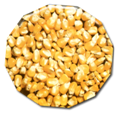
Bajra / Cumbu (Pennensetum typhoides)
• Nutritive value of Bajra is similar to Sorghum
• They have 8-12% of crude protein and rich tannin content.
• Seeds are hard so it has to be ground or crushed before fed to cattle.
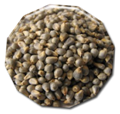
Sorghum /Jowar / Milo (Sorghum vulgare)
• Sorghum is similar to maize in chemical composition.
• They have higher protein and low fat than maize.
• Cattle are fed with ground Sorghum.

Rice (Oryza sativa)
• The crude protein and energy values are comparable to maize.
• It is widely used for human consumption.
• Based on the cost, it can be included in animal feed.
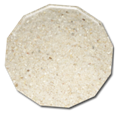
Oats (Avena sativa)
Oats has highest crude fibre of 12 - 16% with 7-15% of crude protein.
Methionine, histidine and tryptophan are deficient in oats but abundant in glutamic acid.
Cattles are fed with crushed or bruised oats.
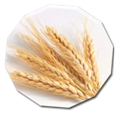
Barley (Hordeum vulgare)
• Barley has high fibre content with 6-14% of crude protein
• It has low lysine and less than 2% of oil content.
• Barley is a main concentrate food for fattening animals in UK.
• Verity “Notch 2” developed at UK is rich in lysine.
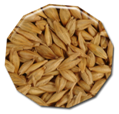
Wheat (Triticum aestivum)
• Wheat contains 6-12% of crude protein.
• The endosperm contains prolamin (gliadin) and glutelin (glutenin) protein mixture, which is referred as gluten.
• Strong gluten is preferred for bread making since it form dough, which traps the gasses, produced during yeast fermentation.
• Finely milled wheat is unpalatable to animals because it forms the pasty mass in the mouth and may lead to digestive upset.
• Do not feed finely ground wheat to farm animals.
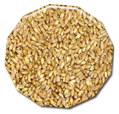
VEGETABLE PROTEINS
Groundnut oil cake
• Groundnut oilcake is one of the best protein supplements for livestock feeding and is extensively used.
• Groundnut oil meal refers to solvent extracted residue and two grades (Grade I & grade II) are available in the market.
• Groundnut oilcake refers to expeller pressed and two varieties (Grade I & grade II) are available in the market.
• The common adulterant includes castor husk and Mahua oilcake.
• Groundnut oilcake has about 45% protein, which is deficient in cystein, methionine and lysine, but good source of Vitamin B12 and calcium.
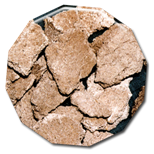
Groundnut oil cake
• Groundnut oilcake is one of the best protein supplements for livestock feeding and is extensively used.
• Groundnut oil meal refers to solvent extracted residue and two grades (Grade I & grade II) are available in the market.
• Groundnut oilcake refers to expeller pressed and two varieties (Grade I & grade II) are available in the market.
• The common adulterant includes castor husk and Mahua oilcake.
• Groundnut oilcake has about 45% protein, which is deficient in cystein, methionine and lysine, but good source of Vitamin B12 and calcium.

Aflatoxin affection
• In rainy season it is specifically labile to contain a toxic factor – Aflatoxins, a secondary metabolite of Aspergillus flavus.
• Mould spoilage and Aflatoxin production can occur at any stage from growing crop to the formulated feed or stored raw material.
• Aflatoxins are the most potent toxic, mutagenic, teratogenic and carcinogenic metabolities produced by the species of Aspergillus flavus and A.parasiticus on food and feed materials.
• Presence of oxygen, conducive temperature (10 – 40ºC) and high humidity favours the mould growth.
• High moisture in the crop, which harvested around wet period and also inadequately dried products, favours the fungal growth and toxin production.
• There are four Aflatoxins, B1, G1, B2 and G2 out which B1 is most toxic.
• The most common symptoms in the affected animals are liver damage with marked bile duct proliferation, liver necrosis and hepatic tumors while the other symptoms include gastritis and kidney dysfunction.
Soybean meal
• Soybean meal contains 44% proteins with all indispensable amino acids except cystein and methionine since the concentrations are sub optimal.
• It can be fed to all livestock up to 30% of the ration.
• The common adulterant includes castor husk and Mahua oilcake.
• Like other oil seeds, raw soybeans have number of toxic and inhibitory substances.
• These toxic, inhibitory substances and other factors in soybean like saponins can be inactivated by proper heat treatment during processing.
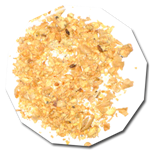
Sunflower oil cake
• Sunflower oilcake contains 40% of protein with low lysine and twice the amount of methionine than soy protein.
• It has very short self-life.
• The expeller variety of Sunflower seed meal or cake has high content of polyunsaturated fatty acids, when fed in large amount to cows it makes butter soft.
• It can be fed to cattle ration up to 20% level.
• Sunflower oilcake is not recommended for calves.
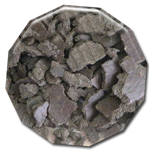
Cotton seed meal
• It has a good quality of protein but with low content of cystein, methionine and lysine.
• The calcium to phosphorous ratio is about 1:6, so calcium deficiency may occur.
• Lactating cows can be fed with cotton seed meal but when it was given large amount, milk may become hard and firm, so butter made from such milk fat is difficult churn and may also tend to develop tallow taints.
• Both decorticated cottonseed oilcake as well as undecorticated cottonseed oilcake are available in the market with two grades (Grade I & II) in each varity.
• Cottonseed meal contains 0.3-20g/kg dry matter of a yellow pigment known as Gossypol, a polyphenolic aldehyde.
• It is an antioxidant and polymerization inhibitor.
• It is toxic to simple stomached animals and the symptoms include depressed appetite, loss of weight and even lead to death due to cardiac failure.
• Gossypol toxicity can be reduced by the addition of calcium hydroxide and iron salts.
• Shearing effect of screw press in expeller process is an efficient gossypol inactivator.
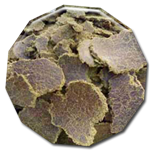
Coconut meal
• It contains 20-26% crude protein with low lysine and histidine content and 2.5-6.5% oil content.
• The higher oil meals tend to get rancid and may cause diarrhoea; hence low oil content meal should be preferred.
• It should be restricted to swine and poultry as it contains low protein and high fibre and low fibre coconut meal can be fed to monogastric animals with lysine and methionine supplements.
• Coconut meal produces firm milk fat that is most suitable for butter making.
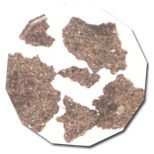
Linseed meal
Linseed is rich protein source with low methionine and lysine content and also rich in phosphorous part of which is present as phytase but has only moderate calcium content.
It is a high source of vitamins like riboflavin, nicotinamide, pantothenic acid and choline.
It also has protective action against selenium poisoning.
Linseed oil meal refers to solvent extracted residue and two grades (Grade I; grade II) are available in the market.
Among the oilseed residues linseed is unique because it readily dispersible in water, forming a viscous slime due the presence of 3-10% of mucilage.
Cyanogenetic glycoside, linamarin and an associated enzyme, linase in immature linseed hydrolyses it with the evolution of hydrocyanic acid.
HCN is a potent respiratory inhibitor and hence, depending on the species the minimum lethal dose taken orally has been estimated as 0.5-3.5 mg/kg of body weight.
Proper water washing, drying and storage can reduce glycosides in the feedstuffs.
Linseed oilcake refers to expeller pressed and two verities (Grade I; grade II) are available in the market.
Linseed oilcake/meal is a good food to ruminants.
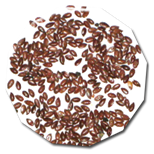
Mustard cake
It is widely used cattle feed in Northern India.
Its nutritive value is lesser than groundnut cake.
D.C.P and T.D.N values are 27% and 74 % respectively.
It can be included up to 10% of the ration;
It has rich calcium and phosphorous content of about 0.6% and 0.1% respectively.
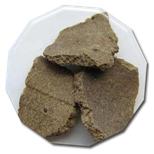
Sesame seed meal / Gingelly oil cake / Til oil cake
• It contains 40% protein, rich in leucine, arginine and methionine but low lysine.
• It was produced from the residues of sesame meal after removal of oil from sesame seed.
• There are three verities – red, black, white.
• White is of high nutritive value than red.
• It has high phytic acid.
• Sesame seed meal has laxative action and can be included in the cattle ration upto 15%.
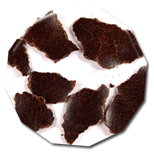
MILLING BY PRODUCTS
Rice bran
• It is the outer coarse coat of the rice grain separated during processing.
• Rice bran is a valuable product with 12-14% of protein and 11-18% oil mostly with unsaturated fatty acids and hence it becomes rancid rapidly.
• The oil removed rice bran is available as deoiled rice bran in market for livestock feeding.
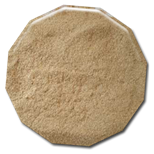
Wheat bran
• Wheat bran is an excellent food with more fibre content.
• It is laxative when mashed with warm water but tends to counter act scouring when it was given dry.
• It is not commonly fed to pigs and poultry because of the fibrous nature and low digestibility.
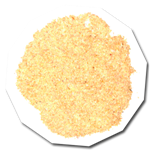
Polishing
• During rice polishing this by products accumulates which contains 10-15% protein, 12% fat and 3-4% crude fibre.
• It is rich in B- complex and good source of energy.
• Due to high fat content rancidity may occur.
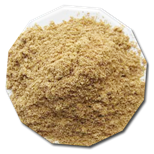
Molasses
• It is a byproduct produced during juice / extract prepared from selected plant material.
• It is a concentrated water solution of sugars, hemicelluloses and minerals.
• Four varities of molasses are commonly available viz. cane molasses, beet molasses, citrus molasses and wood molasses.
• Cane molasses is a product of sugar industry and contains 3% protein with 10% ash.
• Beet molasses is a product during production of beet sugar and has higher protein (6%).
• Citrus molasses is bitter in taste with highest protein (14%) and produced when oranges or grapes are processed for juice.
• Wood molasses is a product of paper industry with 2% protein and palatable to cattle.
• Molasses is a good source of energy and an appetiser.
• It reduces dustiness in ration and is very useful as binder in pellet making.
• Molasses can be included upto 15% in cattle ration.
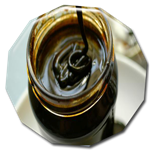
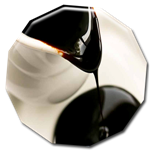
ANIMAL AND VEGETABLE FAT
Fat (Vegetable/Animal) provides 2.25% more energy than carbohydrate or protein.
Oil and fat reduces the dustiness in feed and lessens the wear on feed mixing equipments.
Vegetable oil like corn oil, Groundnut oil, sunflower oil and animal fat like lard, tallow are extensively used in livestock feeding.
Animal fat contains saturated as well as unsaturated fatty acids of C20, C22, and C24.
Vegetable fats contain greater proportion of linoleic acid.
Higher level of poly unsaturated fatty acids leads to rancidity and therefore anti oxidants like Butylated hydroxytoluene (BHT) or Ethoxyquin should be included in high fat diet.

Feeding dairy cow
Feed alone constitute 60 per cent of the production cost of milk. Hence, feeding management play a vital role in farm economy.
The nutrient requirement should be determined for maintenance as well as for milk production and to meet the fat percentage in milk and gestation.
Based on the nutrient requirement ration should be computed.
In general the dry matter from roughage should not exceed 2 per cent of cow’s live weight nor should it be less than 1 per cent
Feeding dairy cow at different stages of lactation
• Under practical feeding condition it is not possible to select much among the roughages or vary the ingredient in concentrate mix.
• The farm manger should carefully plan a cropping programme to ensure year round supply of mixture of leguminous and non leguminous forages.
• One feeding schedule based on thump rule is
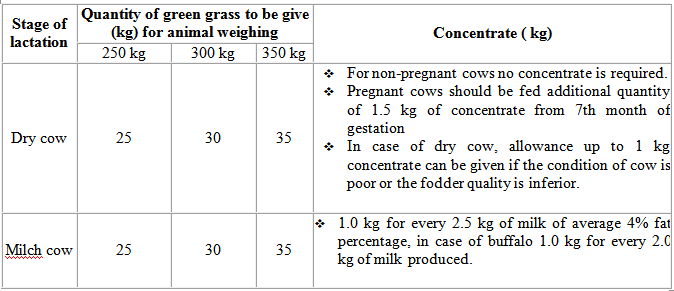
Early lactation
The recently calved high producing cow is unable to eat enough feed to support her milk production.
This means that the cow should have enough reserve to store nutrient to be drawn to tide over the period of heavy demand in early lactation, during which period the cow loses weight.
Challenge feeding
Challenge feeding means the cow with high milk production potential are to be fed increase quantity of concentrate to ‘challenge’ them to produce to the maximum.
This starts two weeks before expected date of calving. This challenge feeding will condition her digestive system for the increased amount of concentrate and provide enough nutrients to initiate lactation on a higher plane.
Two weeks before the expected date of calving start feeding 500 g of concentrate mixture.
The quantity should be increased daily by 300-400 g until the cow is consuming 500-1000g concentrate for every 100 kg body weight.
After calving, the concentrate allowance should be increased by 500 g per day in the first 2 weeks of lactation until the cow achieves peak yield somewhere in the second month of lactation on free choice basis.
After this the milk yield is tested and the concentrate allowance is fixed accordingly.
Challenge feeding schedule:

Feeding during mid and late lactation
The nutrient deficit period of early lactation is followed by a relatively stable period during which the cow can consume enough feed to meet the various demands for nutrients and the body weight of the cow remains more or less stable.
During this period the cow maybe fed a well balanced ration of god quality fodder and concentrate according to the milk yield and fat percentage of milk.
During the late lactation, intake ability of the cow exceeds nutrient needs. This is the time when the cow starts needing extra allowance for the growing foetus.
This is also the period when the cow can readily replenish the already depleted body reserve and gain weight very fast.
From 7 ½ month to 10 months of lactation, cow may be fed 1-2 kg concentrate feed in addition to their nutrient requirement for maintenance and milk production to replenish the condition lost in early lactation.
Feeding high producing dairy cows
High producing dairy cow should eat a large volume of nutrient daily to sustain th milk production at that level.
This is simply not possible with bulky forages alone due to physical limitation of volume intake (space in the rumen).
If high level of concentrate is fed it may change the microbial and chemical atmosphere of the rumen and cause dysfunction.
Rumen fermentation can be controlled by a) composition of ration b) ratio of ingredients in the ration c) quantity of feed supplied d) frequency of feeding and e) physical form of feed.
For a high producer the forage fed should of superior quality which also reduces the quantity of concentrate required.
Crude fibre is very important in the ration of milking cow because it is well known that rumen fermentation leading to acetic acid production is dependent on the percentage of cellulose in the ration.
Cows need acetic acid for maintaining normal milk fat percentage as well as total milk production.
Ruminant ration should contain a minimum of 20-25 per cent crude fibre.
Higher percentage of grain in the ration reduce cellulose digestibility and cause disturbances like depressed milk fat, depressed milk production and in extreme cases damage to the rumen wall, development of acidosis and death.
Frequency of feeding: dividing the daily ration into 3 or 4 parts and feeding them in so many installments has been found to be useful in overcoming this problem.
This also results in greater digestibility and better utilization of protein apart from preventing explosive release of acids.
A high concentrate ration induces less amount of saliva flow compared to roughages.
But when feed is given in 4 or 5 installments the proportion of Na and K salts in rumen return to normal.
Feeding dry cow
Feed alone constitute 60 per cent of the production cost of milk. Hence, feeding management play a vital role in farm economy.
The nutrient requirement should be determined for maintenance as well as for milk production and to meet the fat percentage in milk and gestation.
Based on the nutrient requirement ration should be computed.
In general the dry matter from roughage should not exceed 2 per cent of cow’s live weight nor should it be less than 1 per cent.
Mixing of concentrates and roughages
Traditionally, concentrate are fed at the time of milking. Roughages re offered either before or after milking.
In high producers, when concentrates are fed in heavy doses at milking time, the appetite of the cows will be reduced temporarily and they may not eat roughages for some time.
Consequent, there will be 4 different fermentation, two primarily due to concentrate and two primarily of roughages.
The feeding of concentrates separately from roughages during a four time feeding schedule reduces acidic acid production and increases propionic acid.
It has been observed that feeding grain on top of silage increased the fat percentage of milk production.
Feeding concentrates either on top of forages or mixed with forages has been four to favour optimum rumen fermentation.
This has led to the concept of complete feeds which incorporates both roughages and concentrates.
Complete feeding
In order to simplify feeding of dairy cows complete diet system have been introduced.
Complete diet is an intimate mixture of concentrate and roughages in a desired proportion processed in such a way as to preclude selective eating. It forms the sole source of food for the cow.
It reduces labour requirement and keeps a tighter control on the cow’s nutrition.
It also facilitates the application of least cost method of ration formulation.
Feeding of complete diet ad libitum to dairy cow has been found to be advantageous in that it increases feed intake, preserve milk quality as result in better utilization of nitrogen.
These are in addition to the most obvious advantage of prevention acidosis from over-eating of concentrate by high producer.
The complete diet feeding system is radically different from conventional feeding method in that there is no individual approach in feeding cows.
Group feeding is practiced in complete feeding system. There are also fewer changes in diet formulation according to the milk yield.
This has come as a result of the experimental and practical feeding observation that yield and efficiency are not improved by individual rationing compared to flat rate feeding of cows grouped according to milk yield or stage of lactation.
Recommended Nutrient inclusions for Cattle and Buffaloes
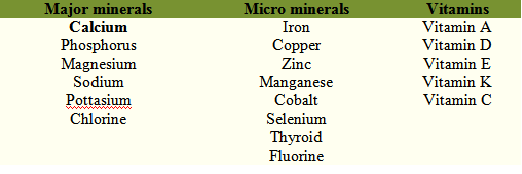
Major minerals
Calcium
Role of Calcium
• 99% of the calcium in the body is present in the bones and teeth.
• Calcium controls the excitability of nerves and muscles.
• Calcium is required for normal clotting of blood.
• Calcium is necessary for activation of enzymes like trypsin, adenosine triphosphatase.
Clinical signs
• In young animals calcium deficiency causes rickets, characterised by misshapen bones, enlargement of the joints, lameness and stiffness.
• In adult animals calcium deficiencies produces Osteomalacia, characterised by weak bones, fragile and are easily broken.
• Enlargement of the osteochondral joints in the ribs produces a condition called as Rickety Rosary.
• Pigeon chested appearance is a symptom due to enlargement of sternum.
• Milk fever (parturient paresis) is a condition in dairy cows shortly after calving, is characterized by a lowering of the serum calcium level, muscular spasms, and in extreme case paralysis and unconsciousness.
Supplementation
• Ground limestone
• Steamed bone meal
• Dicalcium phosphate and
• Green leafy crops, especially legumes, are good sources of calcium.
Phosphorus
Role of Phosphorus
• Phosphorus occurs in close association with calcium in bone.
• Phosphorus plays a vital role in energy metabolism in the formation of sugar-phosphates and adenosine di- and triphosphates. ( ADP & ATP).
• Phosphorus plays a key role in metabolic reaction of carbohydrate, protein and lipids which occurs through phosphorylated intermediate compounds.
• Phosphorus is the component of phospholipids, which are important in lipid transport and metabolism as constituent of cell membranes.
• Phosphorus is constituent of RNA and DNA.
• Phosphorus is a component of many enzyme systems.
Clinical signs
• In young animals phosphorus deficiency causes rickets, characterised by misshapen bones, enlargement of the joints, lameness and stiffness.
• In adult animals phosphorus deficiencies produces Osteomalacia, characterised by weak bones, fragile and are easily broken.
• Enlargement of the osteochondral joints in the ribs produces a condition called as Rickety Rosary.
• Pigeon chested appearance is a symptom due to enlargement of sternum.
• 'Pica' or depraved appetite has been noted in cattle when there is a deficiency of phosphorus in their diet; the affected animals have abnormal appetites and chew wood, bones, rags and other foreign materials.
• In chronic phosphorus deficiency animals may have stiff joints and muscular weakness.
• Low dietary intakes of phosphorus have also been associated with poor fertility, apparent dysfunction of the ovaries causing inhibition or depression and irregularity of oestrus.
Supplementation
• Cereal grains.
• Fish meal and
• Meat products
Magnesium
• Magnesium is closely associated with calcium and phosphorus.
• Essential constituent of bone and teeth.
• Magnesium is the commonest enzyme activator.
• Magnesium plays a role in oxidative phosphorylation leading to ATP formation.
• Magnesium is necessary in metabolism of carbohydrate, lipids and in the biosynthesis of proteins.
Clinical signs
• In adult ruminants low blood levels of magnesium (hypomagnesaemia) causes a condition known as hypomagnesaemic tetany /magnesium tetany /lactation tetany / grass staggers.
• It is characterized by nervousness, tremors, twitching of the facial muscles, staggering gait and convulsions.
Supplementation
• Wheat bran
• Dried yeast
• Cottonseed cake
• Linseed cake
• The mineral supplement most frequently used is magnesium oxide, which is sold commercially as calcined magnesite.
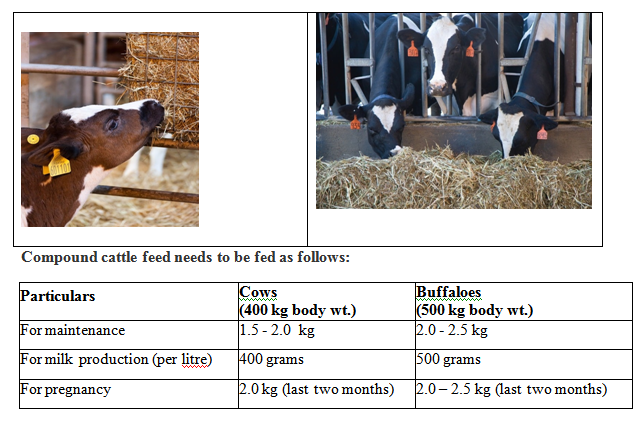
Feeding allowances
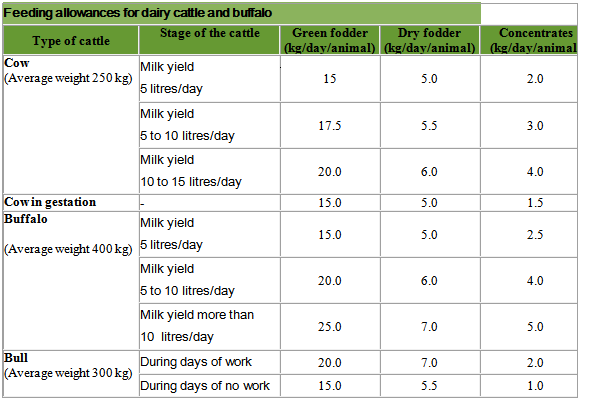
Advantages of Early Weaning
Dams of early weaned calves are in better condition at calving and that carries over to breeding season.
Calves can be fed to grow to their genetic potential when forage conditions are not optimal for the dam.
It may be the key to more efficient feed use during times of drought or other periods of feed shortage.
Early weaned calves are very efficient of converting feed to gain.
A high percentage of early weaned calves fed a growing ration for a short period of time then stepped-up on a high concentrate diet can achieve a USDA Quality Grade of average choice or better.
Early weaning permits more cows to be carried on a limited forage supply.
Calves weaned before or very early in the breeding season, pregnancy rates will be greater for thin cows.
Disadvantages of Early Weaning
Excellent calf nutrition and management is required.
More labor is necessary.
The facilities and feed must be available for small calves.
Calves spend a lot of time in a dry lot prior to slaughter.
If you have developed a cow herd that has above average milk output, the potential increase in weaning weights through milk production is not realized.
Information on dam performance from production records will be of limited use.
Colostrum feeding

Colostrum Feeding
Colostrum is the first milk secreted after parturition.
It contains large amount of Gama globulins which are anit-bodies produced by the cow against antigens encounter during her life including those against many disease producing organisms.
Colostrums is highly fortified source of nutrient having 7 times the protein and twice the total solids of normal milk, thus it gives an early boost in portion and solid intake.
It contain higher amount of minerals and vitamin A which are essential to combat disease. Ingestion of these through colostrums substantially increases the calf’s survivability.
Absorption of these antibodies provides the calf with an umbrella of passive immunity.
Colostrums give a laxative effect which is helpful in expulsion of muconium (first faeces).
It will be highly useful to feed colostrum in the first 15-30 minutes followed by a second dose in approximately 10-12 hours.
First ½ hour to 12 hours of life, calf should be given with colostrum of its 5-8 % of body weight. Then 2nd and 3rd day, it should be of 10% of its body weight.
The excess colostrums can be stored by refrigeration and can be used to other calves or orphan calves.
Composition of Colostrum

Weaning

• Separation of calf and making independent of its mother for food is known as weaning.
• Now days, early weaning is recommended for better management.
• Under early weaning system, weaned calves housed separately and scientific feeding schedule and managemental practices followed.
• In this method, the cow is not allowed to suckle by its calf after colostrum feeding.
• Instead, the cow is completely milked out and required quantities of whole milk or skim milk are fed to the calf.
• Weaned calves should be trained to drink milk from pails / nipple pail so that feeding management is easier.
• Weaned calves should be weighed every week and the quantity of milk to be fed is calculated accordingly.
